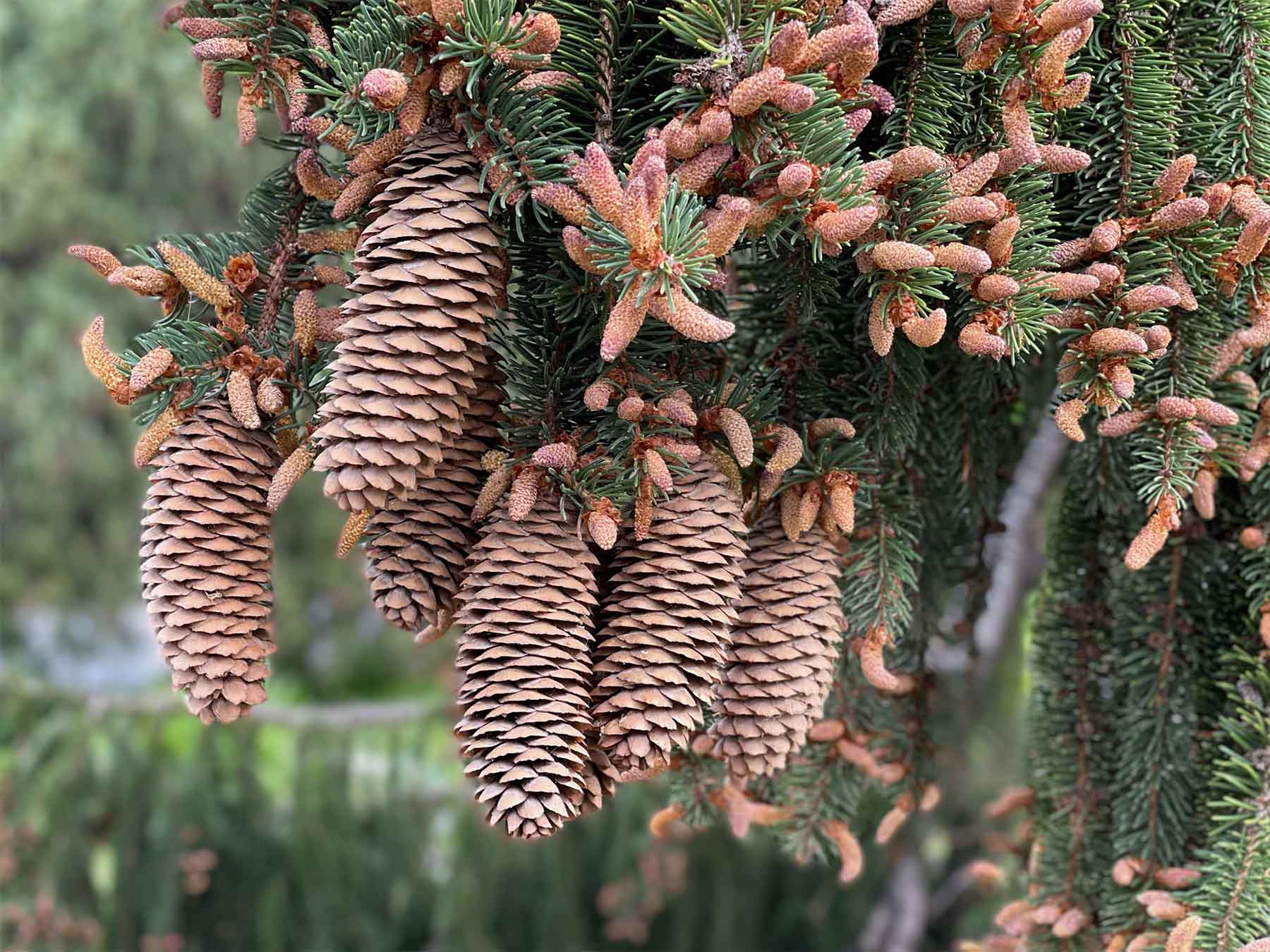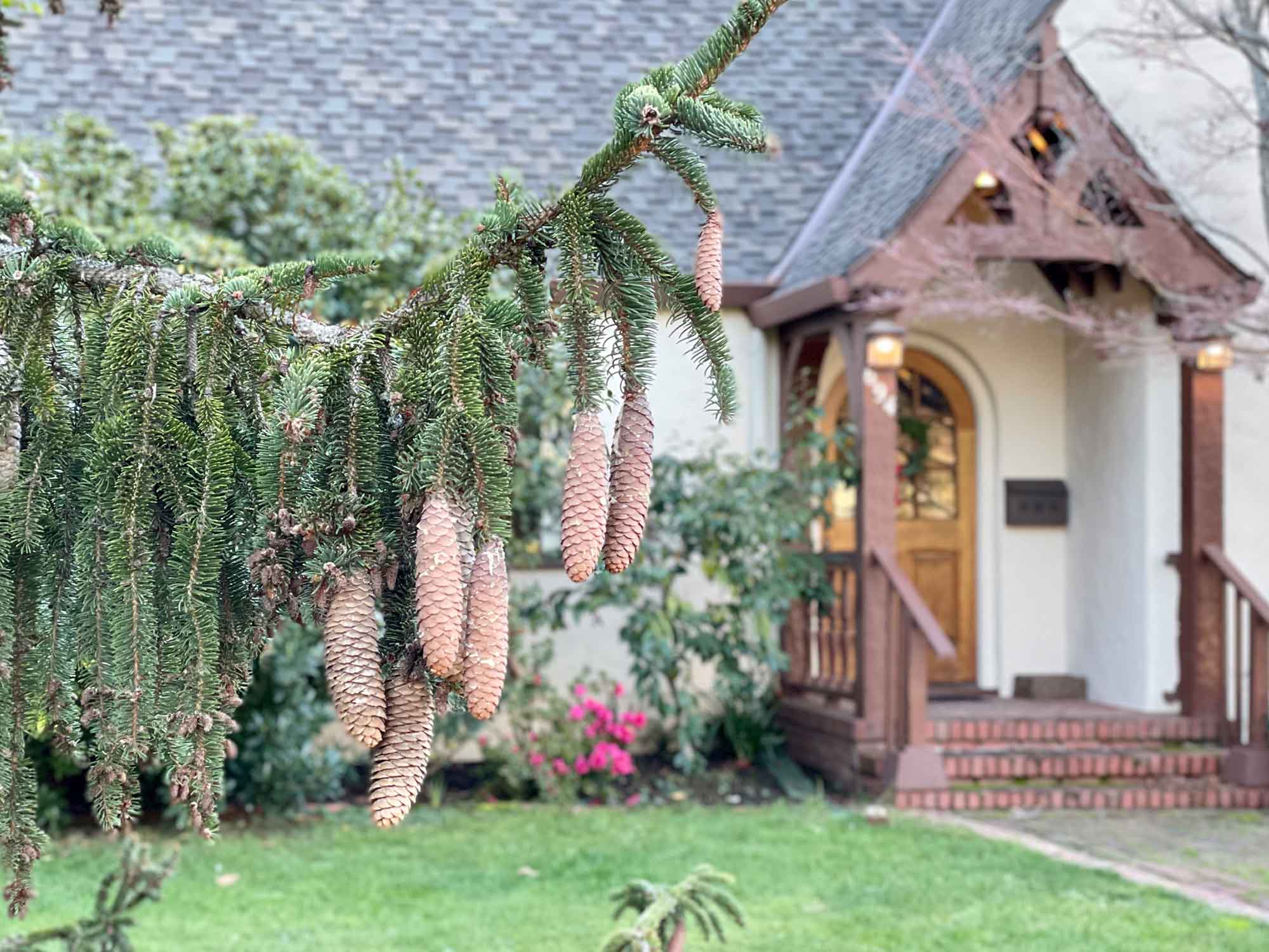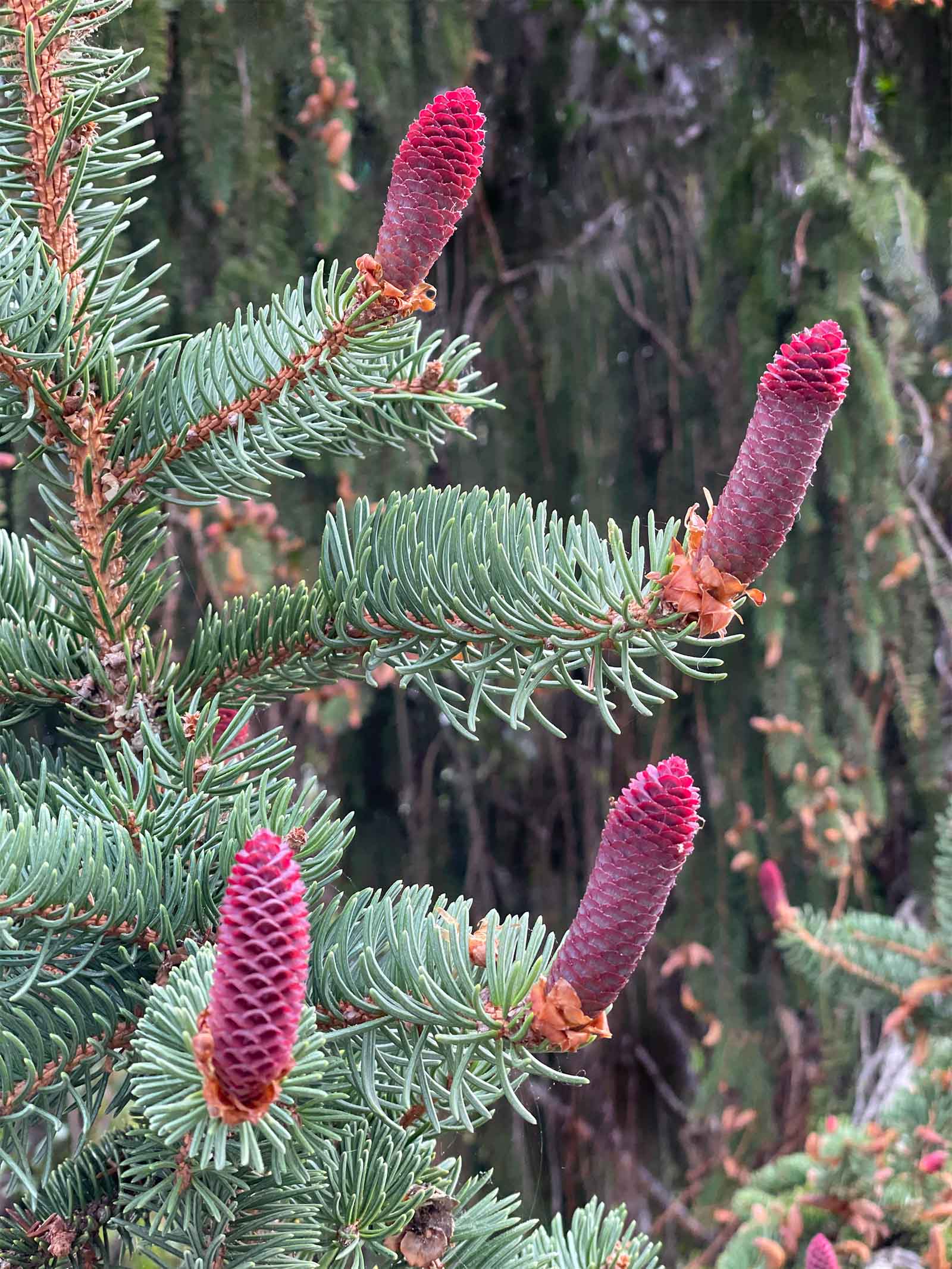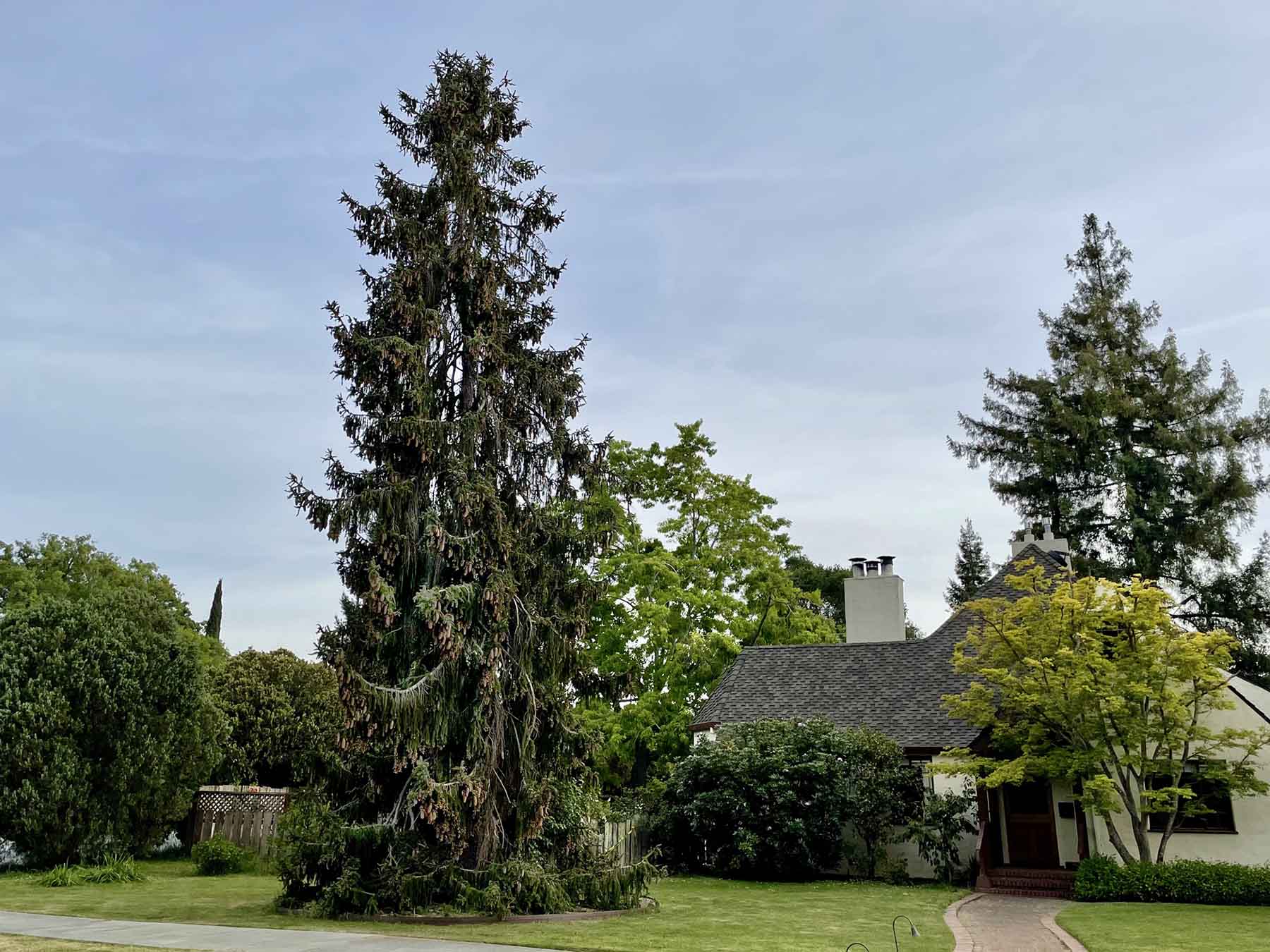Picea abies
 Norway spruce
Norway spruce
The spruce has single needles, as does a fir, but they are diamond-shaped in cross-section and no top or bottom can be distinguished. New needles are bluer than the green ones of the previous year. The needles are carried on “pegs,” which remain on the twig after the needles fall (pulling out a fresh needle, however, rips out the peg). These little pegs are squarish and have flat tops. The Norway spruce has needles about ½ inch long with almost blunt tips, and has seed cones 5–6 inches long that hang very attractively at the ends of branches. Fir cones, of course, stand upright on the branch. Norway spruce is an important plantation tree in Britain, Germany, and other parts of Europe, and in the United States is a widely planted ornamental.

A magnificent specimen at 694 Alvarado Row of stately and somber mien was felled by winter storms in 2023. Estimated to be about 80 years old, it may be the last of campus’s specimens.
Other spruces that may be present on campus are Engelmann spruce (P. engelmannii) and Sitka spruce (P. sitchensis). Tens of millions of Sitka spruce have been killed by beetles as a result of temperature rise in Alaska since the 1970s.
Name derivation: Picea – Latin name for pitch-pine, derived from pix (pitch); abies – Latin name for fir (abies).
About this Entry: The main text of this entry is from the book Trees of Stanford and Environs, by Ronald Bracewell, published 2005. Minor edits; Old Union location removed; Lasuen Street location moved to P. orientalis entry; all locations up to date (SP, Mar 2023). Note on pulling out needles added (Feb 2024, SP).






